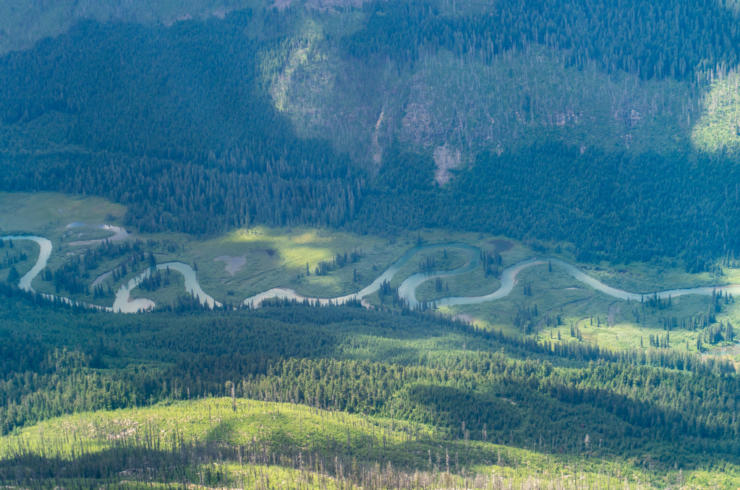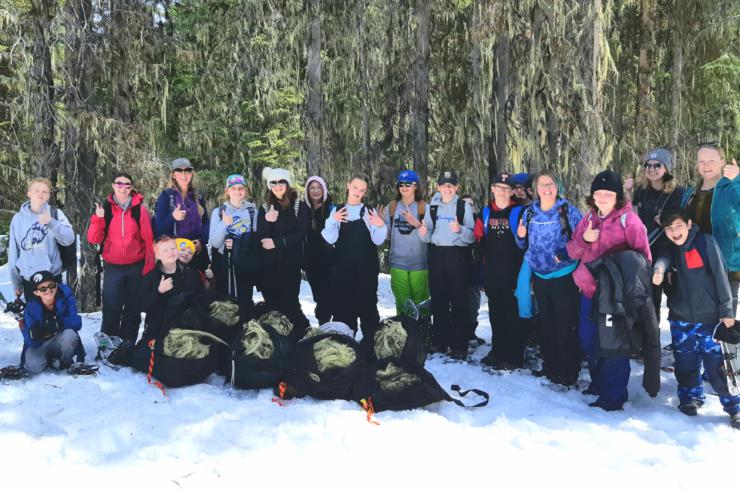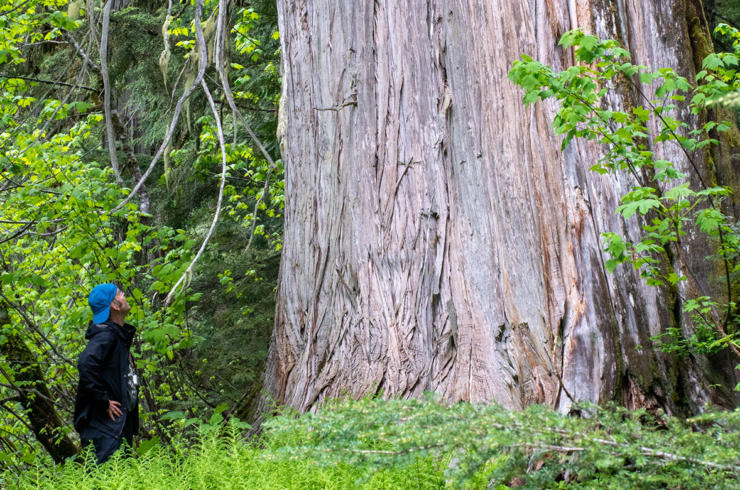The highly endangered caribou rely on large tracts of old forests for their winter food and protection from predators. Habitat loss, degradation and fragmentation from industrial old-growth logging has been the largest contributor to the decline of mountain caribou.
The fragmented landscape has led to atypically larger numbers of deer, moose and elk which has led to more predators like wolves and cougars. Scientists believe that these landscape-scale changes in predator/prey dynamics have in turn led to greater predation risk to caribou. Exploding motorized recreation and a changing climate also threaten mountain caribou.
Predation
While caribou scientists agree that predation is the major immediate threat to mountain caribou, habitat loss and degradation is the ultimate cause. This allows these animals – and their predators – to increase and expand into mountain caribou habitat.
Scientists stress that ultimately the only way to protect and recover mountain caribou is to protect sufficient habitat and restore a predator-prey system that does not disadvantage caribou. In the short term, direct control of predators may be required. In the medium to long term, restoration of balance in the predator-prey system through habitat recovery will provide for stable and healthy caribou, deer, elk, moose and predator populations.
- Industrial logging has removed much of the old-growth forest that caribou need for food and for cover from predators like wolves and cougars. After old forests are logged, clear-cuts favour deer, elk and moose, because for a few years after logging there is more browse for them. Their presence supports more predators which incidentally prey on caribou.
- Before their habitat was fragmented by logging and similar developments associated with recreation and mining, caribou were largely able to avoid predation through their unusual seasonal movements and by spreading themselves throughout extensive old-growth forests.
- It is not energy efficient for predators to rely on caribou as a main food source, since caribou spread themselves throughout the forest at relatively low densities. But as the ranges of deer and moose have increased by human alteration of habitat, predators of deer and moose encounter – and kill – caribou more frequently.
Recreation
The caribou recovery plan prohibits motorized recreation across more than a million hectares of caribou habitat. However, recreation is still a problem. Mountain caribou’s critical winter range overlaps considerably with mechanized backcountry recreation. Instead of regulating BC’s backcountry recreation industries and setting clear, enforceable standards, the BC government continues to rely on voluntary “best management practices” to reduce harm to caribou and other sensitive wildlife.
The recovery plan has yet to take action to regulate the impact of helicopters on mountain caribou herds and their habitat. Legal snowmobile closures now cover about half of identified caribou habitat and falls short of what is required to effectively protect some critical habitat areas.
- Snowmobilers want to ride in the same deep snows and open subalpine forests that caribou need to survive. Technological advances mean that snowmobiles can go farther and faster, carving into even more caribou terrain.
- Helicopter and sno-cat skiing is widespread throughout caribou habitat. Scientists have shown that snowmobiles drive caribou away from these critical habitats, and evidence is mounting that helicopter skiing has similar impacts. Motorized recreation can push caribou into less desirable habitat and increase the energy demands on the animals, which in turn can decrease the health of pregnant cows and their offspring leading to early calf mortality.
- Commercial recreation businesses have unprecedented access to BC’s wilderness. Research shows this adds additional stress to caribou already being squeezed by habitat fragmentation and at a vulnerable time of the year due to the increased energy demands of winter.
- Unregulated access has recently led to growing numbers of people spending winter playtime in the caribou’s critical winter ranges.
Climate change
Scientists agree that climate change is already affecting British Columbia’s ecosystems. Winter snowpacks in the Inland Temperate Rainforest are already decreasing, and this decrease will probably continue.
- This is a potential problem for caribou, which rely on deep snow to reach arboreal lichens, their main winter food.
- We know that healthy forests are better able to withstand and adapt to change. And intact forests help keep us cool. Because logging releases the carbon that is contained in forests, the Union of Concerned Scientists recommends forest conservation as its top forest-based strategy for mitigating global warming.
- Caribou have experienced a number of climate change events over the last several thousand years. If we can reduce or eliminate existing known threats to caribou, and ensure enough forests are protected and habitat connected, the outlook for caribou – and many other species, including we humans – will be much brighter.








